Ugly Things’ Mike Stax: writer, editor, publisher, musician, songwriter, label owner – interview
Mike Stax, one of the most versatile members of the professional music industry recently allowed “It’s Psychedelic Baby” a look into his world. Renowned for his work as a writer, publisher, label owner and musician, Stax recently shared his story with It’s Psychedelic Baby’s Kevin Rathert.
Mike, you were born in the UK in 1962. Where was your birthplace and was music a big part of life in the Stax household?
I was born in Watford, but grew up in Cheshire, Leicestershire and Yorkshire. It wasn’t a particularly musical household, but the radio was usually playing and my Dad had a record collection, mostly jazz. More importantly he had a reel-to-reel tape of the Beatles’ Rubber Soul and Help albums, and I listened to those repeatedly as a kid, usually on headphones.
“Brian Jones seemed like the ultimate rebellious doomed pop star”
Growing up, what kind of music and which artists in particular were you attracted to?
After those Beatles albums, the next thing that really grabbed my attention was David Bowie. Watching Top of the Pops was a weekly ritual, and, like thousands of other English kids, seeing Bowie performing “Starman” on that show was an absolute revelation, as was “The Jean Genie.” I was an instant fan. My first album was Aladdin Sane, which I got for Christmas in 1973. From then on I was on a constant quest for rock & roll. After Bowie, my next obsession became the Rolling Stones – specifically the Brian Jones era band. Brian Jones seemed like the ultimate rebellious doomed pop star and I read everything I could about him. At the age of 14 I even travelled to Cheltenham to visit his grave.
Who was the first artist or group that you wrote about and what publication was it published in?
I put together my first fanzine when I was 15. It was all about the Rolling Stones. I printed three copies and gave the other two to my friends.
It is well known that you were a huge fan of the American blues band The Crawdaddys. How were you first exposed to their work?
I used to listen to John Peel’s radio show every night on a transistor radio hidden under my pillow. One night in 1979 he played “Oh Baby Doll” by the Crawdaddys. I was already a huge fan of ‘60s UK R&B bands like the Yardbirds, Animals, Pretty Things and the Downliners Sect, so I was astonished when Peel explained that this was a new record by a band from California. They had the British ’64 R&B sound down cold. I tracked down the LP at a record shop in Soho, and a few months later bought an EP and a 45, which were even better. At that point I wrote a fan letter to the band c/o Bomp Records. Greg Shaw forwarded my letter to the band’s leader, Ron Silva, and a few weeks later I received a letter from him asking if I’d be interested in moving to San Diego and becoming their new bass player. I’d just left school and was unsure of my next move in life. I saved up some money for a plane ticket working at a vacuum cleaner factory, and within a few months was on a plane to the United States with my bass guitar in my hand and about 200 dollars in my pocket.
What was the first bass that you owned? What did you play in the Crawdaddys and what do you play today?
My first one was a cheap Fender Precision knockoff. I soon upgraded to a Gibson EB2. That’s the bass I brought to the States when I joined the Crawdaddys. But in San Diego I found a Harmony and loved the sound of that one. I bought it in 1982 for $75. That has been the main bass I use ever since, though I also have a Burns Baby Bison.
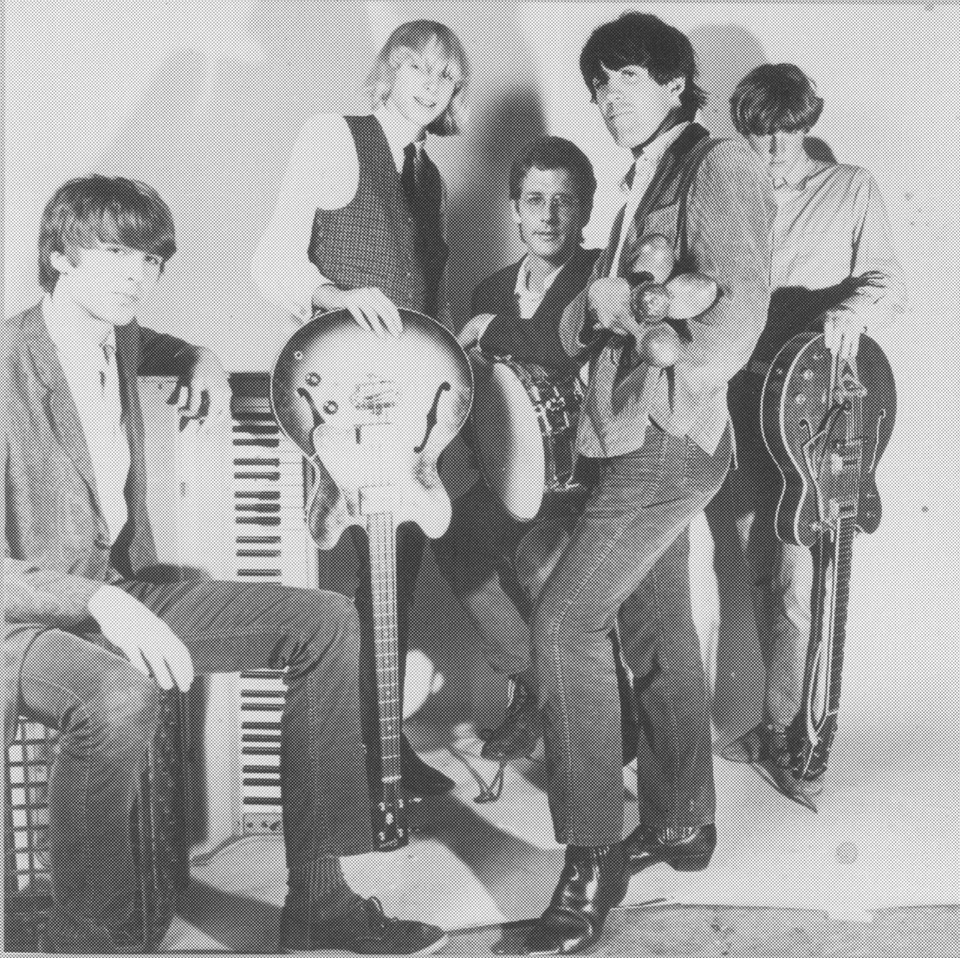
I have read that you relocated to San Diego, California to become a member of The Crawdaddys. When did you come to the United States? What was your role in the band and who were the other members?
I moved to the States in November of 1980, the day before Reagan was elected. At that point the Crawdaddys consisted of Ron Silva on lead vocals and drums, Keith Fisher on keyboards, Steve Horn on sax and myself on bass. Soon afterwards we added Joe Piper on guitar. The lineup was constantly changing throughout 1981-82.
Your relationship with The Crawdaddys seems to have been full of ups and downs. Would you describe for our readers your tenure with the band? How much recording did you do with the band? What caused your exit?
The Crawdaddys was a learning experience for me. Ron and Keith are exceptional musicians and I’d only been playing bass for a few months when I joined so there was a sharp learning curve for me. Over time I turned into a half-decent bass player, but my limitations were a cause of some friction, especially with Keith, who also had a completely different vision for the band than I did. He wanted to turn the Crawdaddys into a more sophisticated soul R&B band, whereas I favored the raw ‘60s punk R&B sound of bands like the Pretty Things and the Downliners Sect. After six or seven months it all came to a head and they kicked me out of the group.
You returned to the UK briefly, but within months you were back to California to stay. How was it returning to England and why were you there such a short time?
I returned to the UK in the summer of ’81, but within days – maybe hours – of arriving I knew I’d made a terrible mistake. I wanted badly to return to the States and more importantly return to playing with the Crawdaddys. There had been a lot of teenage politics in my ousting, and now the alliances had reconfigured and they wanted me back. I scraped together some money and was soon back over there. That began a productive era for the Crawdaddys with a stable lineup comprised of Ron Silva on lead vocals, Peter Miesner on guitar, Keith Fisher on keyboards, Gordon Moss on drums and myself on bass. We recorded quite a lot of demos during 1982-83 and some of these were eventually released on the Here ‘Tis LP.
“Ugly Things came about because I felt the need to turn more people on to the music I was passionate about”
1983 seems to have been a watershed year for you. Tell us if you will how Ugly Things magazine came about? What was the inspiration for the magazine? How did you arrive at the title? How many writers contributed to the first edition?
Ugly Things came about because I felt the need to turn more people on to the music I was passionate about: ‘60s garage, beat, R&B and psychedelia. New music at the time was dreadful, synthetic rubbish, much of it shaped by the MTV mentality. There was a lot of pretty-boy new romantic pop, a lot of excruciating hair metal bands – all of it seemed phony and superficial to me. I saw ‘60s era bands like the Seeds, the Pretty Things and Q65 as the antidote. They were raw, crude, ugly and, above all, REAL. The name “Ugly Things” just seemed to sum it all up for me. Obviously it was a nod to the Pretty Things, but it was also inspired by the Australian ‘60s punk compilation of the same name, which included the amazing song “Ugly Thing” by the Creatures. There were only three or four writers at the time: me, and a couple of friends, most of whom would be a part of my next band, the Tell-Tale Hearts, which we formed soon afterwards.
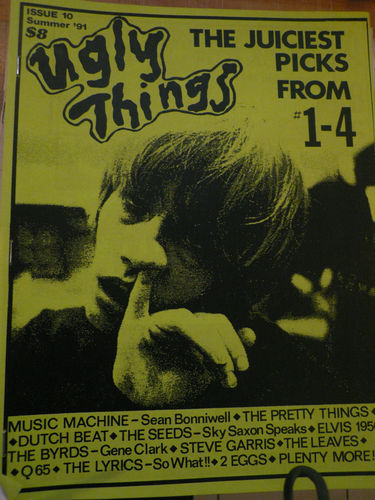
What was the focus of Edition #1? In those pre-internet days how were you able to locate the musicians and other members of the music industry who you wrote about? How did the Ugly Things staff of 1983 compare with the present day staff?
Issue #1 had an interview with Steve Garris, a local eccentric who hung around the scene, plus short articles on Q65 and the Byrds. It wasn’t until Issue #2 that I was able to interview any original ‘60s musicians. That issue included a lengthy interview I did with Sean Bonniwell of the Music Machine. Fortunately he turned out to be a very thoughtful and articulate interview subject. It was his first interview since the ‘60s and the first time ever he’d really talked about his songs in any depth. Issue #2 also included an interview with members of the Leaves by Ray Brandes.
Locating musicians to interview was much more difficult in those pre-Internet years. For example, I remember going down to the public library and pawing through the Mississippi phone directory to find a phone number for Sid Herring of the Gants. I was successful in that instance, but I often had to make a lot of awkward cold calls when trying to track down band members. These days it seems you can find practically anyone with a few clicks on the computer.
As for “staff,” there really wasn’t any. It was just me and my mates. And 30 years later, it kind of still is – I just have more of them now.
How many copies of the first edition of “Ugly Things” were printed? How did your raise the money to have Ugly Things published and distributed? How did you promote the publication?
I printed 200 copies of the first issue at first, and later had to do another 200 when that one sold out. I funded it with small loan from the parents of my friend Carl Rusk, supplemented by a couple of local advertisers. Promotion consisted of taking it round the record shops in San Diego and LA and selling a few at gigs. But I also mailed copies to some other fanzine publishers such as Ron Rimsite (99th Floor) and Greg Prevost (Outasite) and that led to some cross-pollination with the East Coast garage scene.
Subsequent issues thereby ended up for sale at New York City stores like Venus Records and Midnight. It kind of snowballed from there. At one point I had a classified ad in Goldmine, but they misspelled it as “UGLY THINS”!
The same year you became a member of The Tell-Tale Hearts. How did the band come about and who were your band mates? You were the bassist in the band, right? Did you write any of the band’s material?
I formed the Tell-Tale Hearts in 1983 with Ray Brandes (lead vocals), Bill Calhoun (organ, harmonica), Eric Bacher (guitar) and David Klowden (drums). I played bass. I’d already played in a few ad hoc bands with Ray and Bill while I was still in the Crawdaddys, and we were close friends. I was frustrated by the direction the Crawdaddys had been taking and at how little original material they’d been playing. It was time to start something new. Ray, Bill, Eric and myself all contributed original material to the new group.
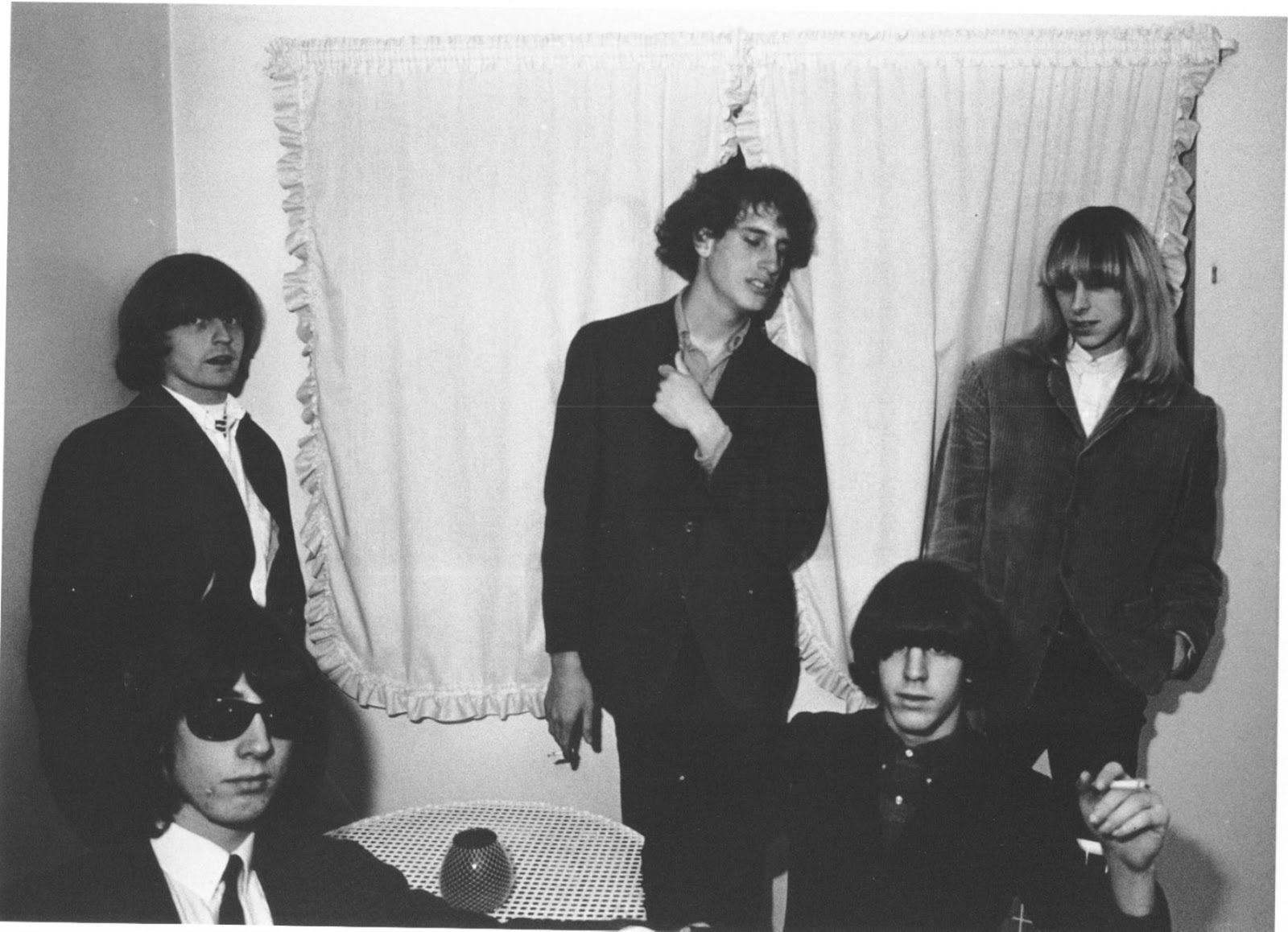
The band was signed by Greg Shaw’s Bomp/Voxx label. What was the relationship between the band and Greg? Tell us, if you would, what was your personal relationship with Greg like?
I already knew Greg pretty well, of course, because of the Crawdaddys. He recognized right away that I was a FAN, a rock & roll obsessive like him. I was always bugging him for information about different bands, records and so on, and he was only too happy to share his knowledge with me, along with countless cassette tapes of his extensive record collection. I think Greg was as frustrated as I was that the Crawdaddys had failed to come up with another record, so when I told him I had formed a new group he was immediately very supportive. He gave us a slot on the second volume of the Battle of the Garages series and soon afterwards offered us a deal to record a full album. Everything happened really quickly.
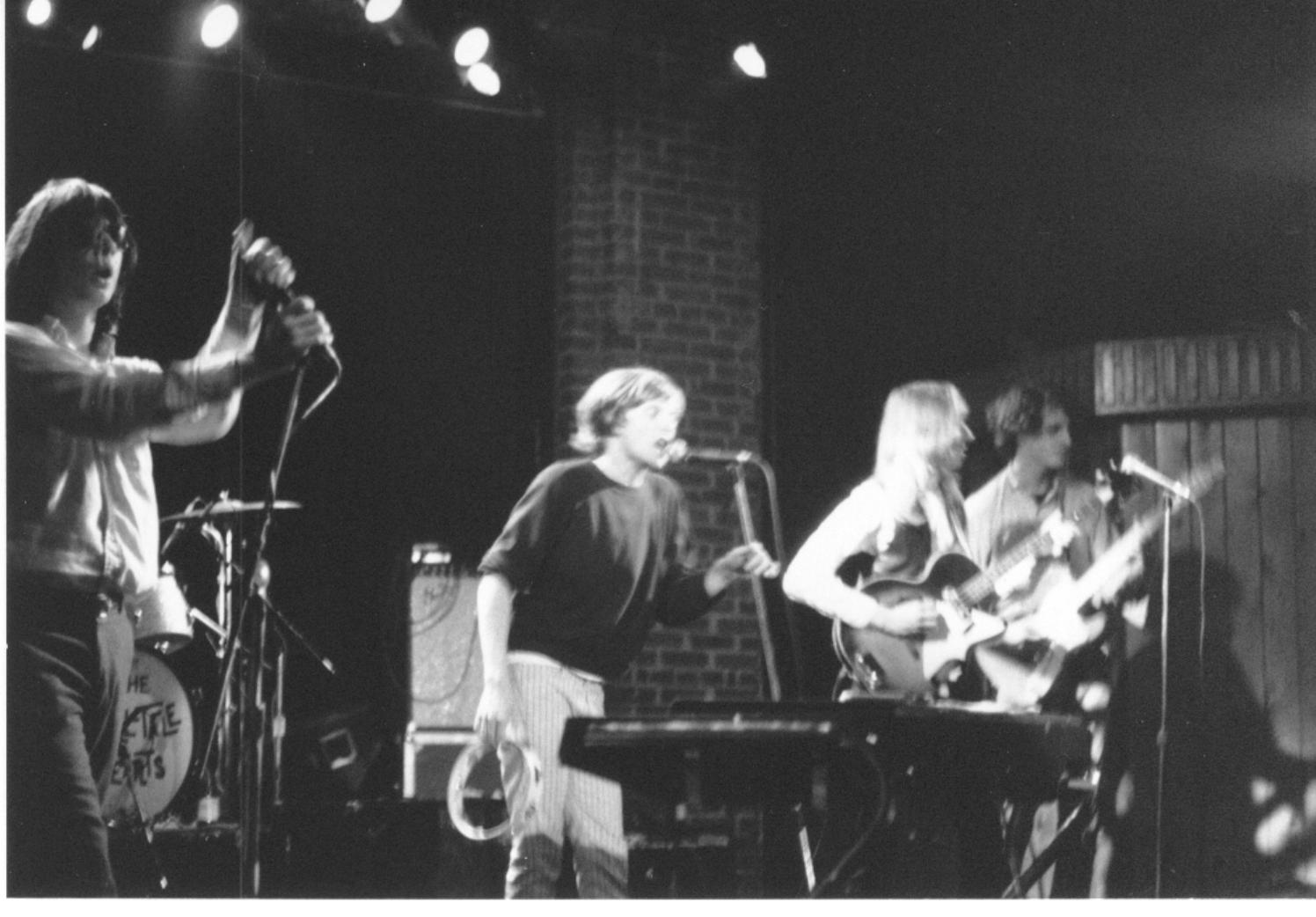
The band cut an LP The Tell-Tale Hearts in 1984 and an EP The Now Sound of The Tell-Tale Hearts in 1985. Could you tell us a bit about the recording sessions for these releases? How were sales?
The first album was recorded in about two days at Silvery Moon studios in LA. Greg Shaw had booked blocks of time there and a lot of the bands on Voxx recorded their debut albums there at around the time. The Gravedigger V were there the week before us, I think, and the Miracle Workers came in the week afterwards. Anyway, it was the first time in a ‘real’ studio for most of the Tell- Tale Hearts so we didn’t have a big say in the way it was recorded and ultimately were dissatisfied with the result. It sounded too tame and clean for our tastes.
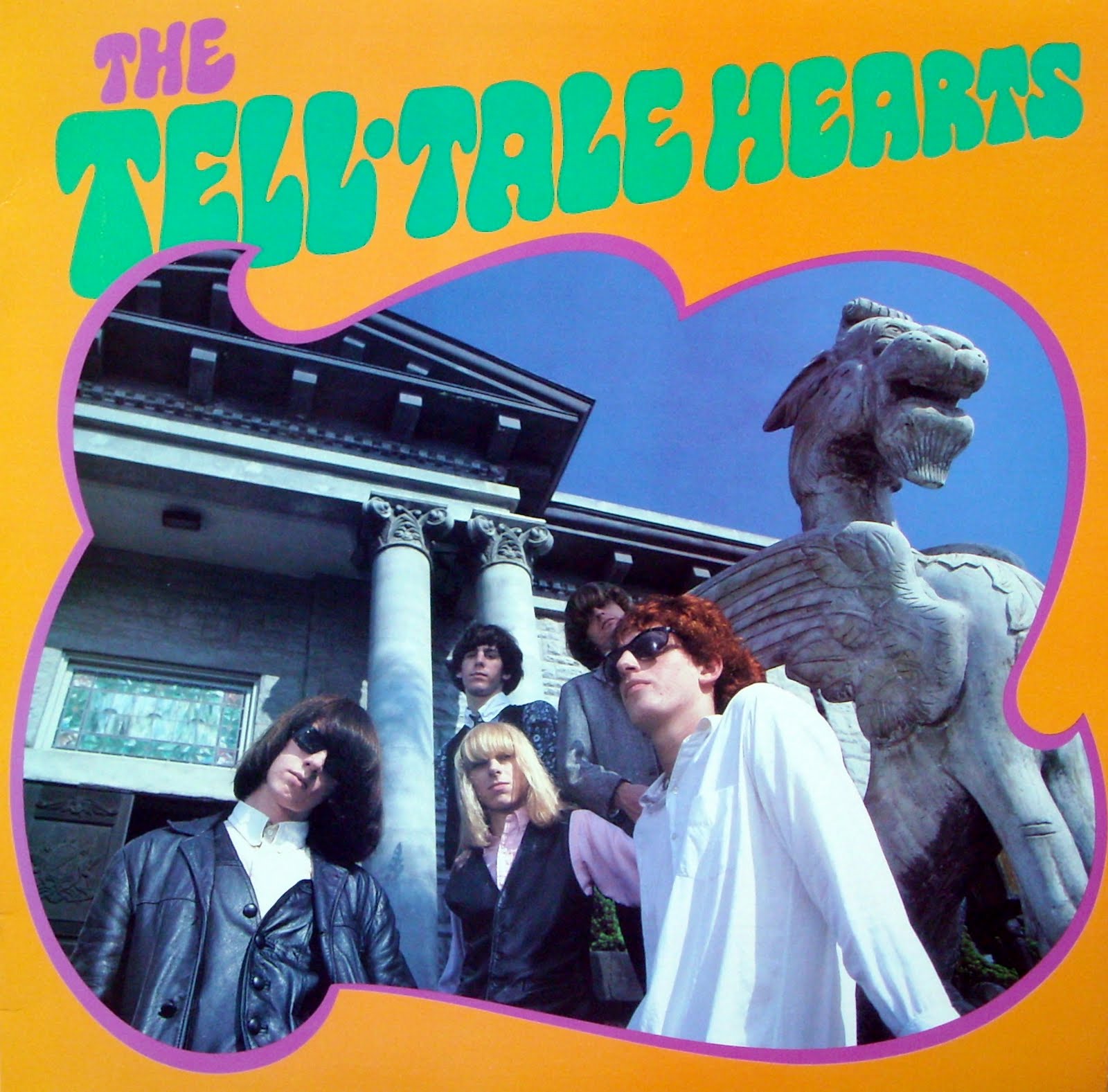
For our next record we went to Mark Neill who had a studio in Dulzura on the rural outskirts of San Diego County. He used all vintage gear, a three-track recorder, tube mixing board, top-of-the-line ‘50s and ‘60s microphones, etc, plus he was a ‘real’ producer with a great ear. It made all the difference in the world. I’m still proud of The ‘Now’ Sound record.
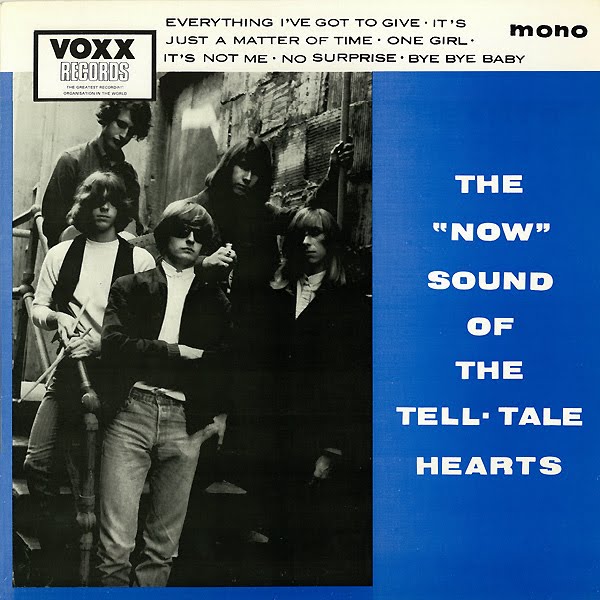
Sales? I think each of them sold a couple of thousand copies, maybe less.
The Tell-Tale Hearts disbanded in 1987. Why did the band break up? Were you a member of any band between 1987 and 1999 when The Loons released Love’s Dead Leaves?
Eric Bacher left in ’86 and we lost the original raw chemistry we’d once had. Peter Miesner from the Crawdaddys stepped in, and did an excellent job, but we kind of lost direction. The band split into factions and then into pieces. After that Bill and I regrouped with Eric to form the Barons. We started recording an EP but broke up before we could complete it. Next Bill and I reclaimed the Tell-Tale Hearts name with Jon McKinney on guitar, Ron Swart on organ and Paul Carsola on drums. We released a couple of good singles, including a cover of the Pretty Things’ “Circus Mind” but in retrospect I feel using the Tell-Tale Hearts name was a mistake because it was a totally different band.
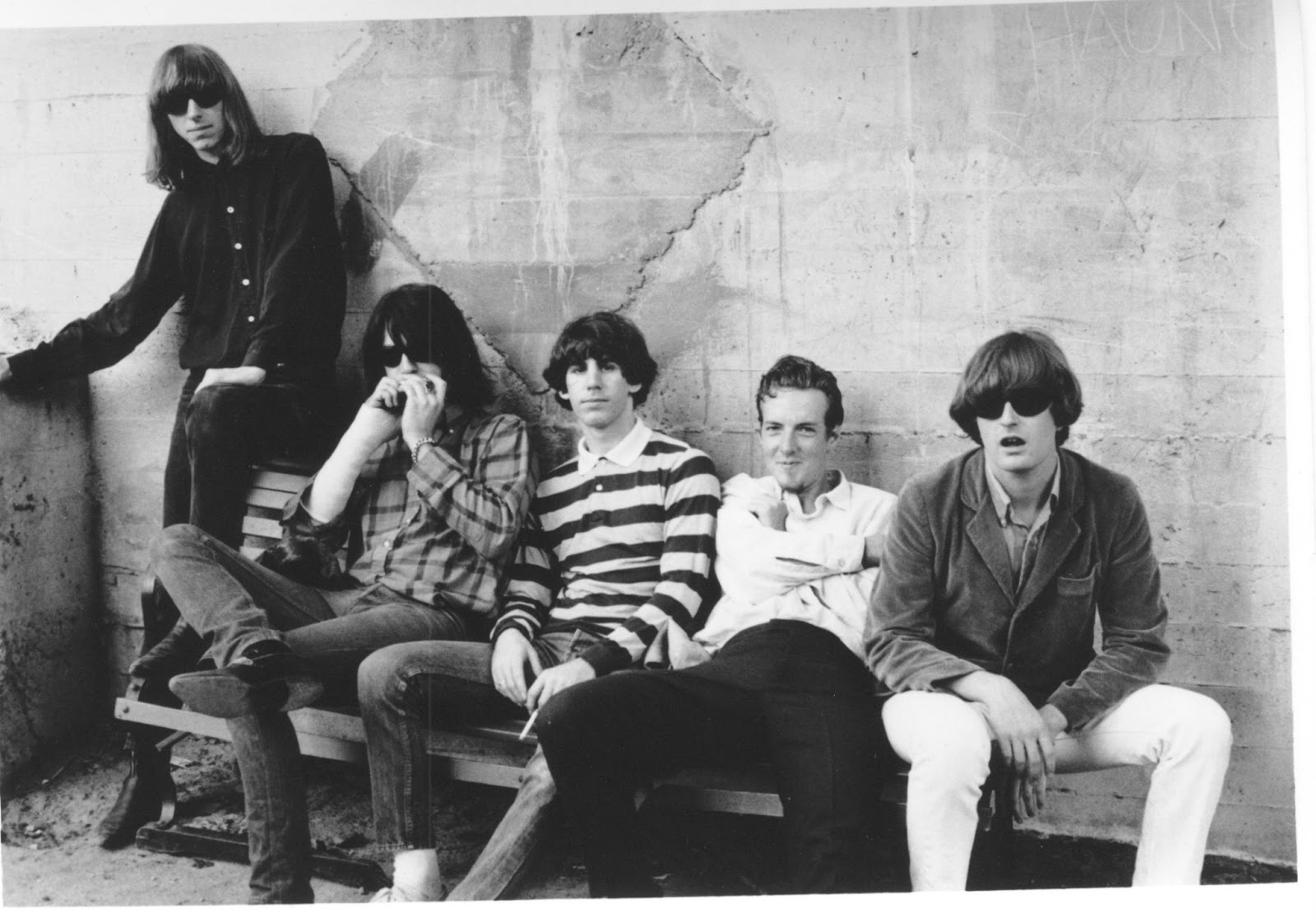
When that band split in 1989, Ron Swart and I teamed up with three members of the Trebels to form the Hoods: Jay Wiseman (vocals, harp), Xavier Anaya (guitar), Ron Swart (organ), John Chilson (drums) and myself on bass. We were together for four or five years and recorded an album (Gangsters & Morticians 1991), some singles and a 12-inch EP (Four Songs To Kill, 1992). It was a fun time. Jay and I formed a pretty solid songwriting team and I became more proficient at putting songs together and singing harmonies. Eventually though I got the itch to take next step and become a lead singer and front man, so in 1996 I formed the Loons, once again with Eric Bacher on guitar, John Chilson (from the Hoods) on drums and Andy Rasmussen on bass, who was replaced by Gary Strickland just prior to us recording the Love’s Dead Leaves album in 1998.
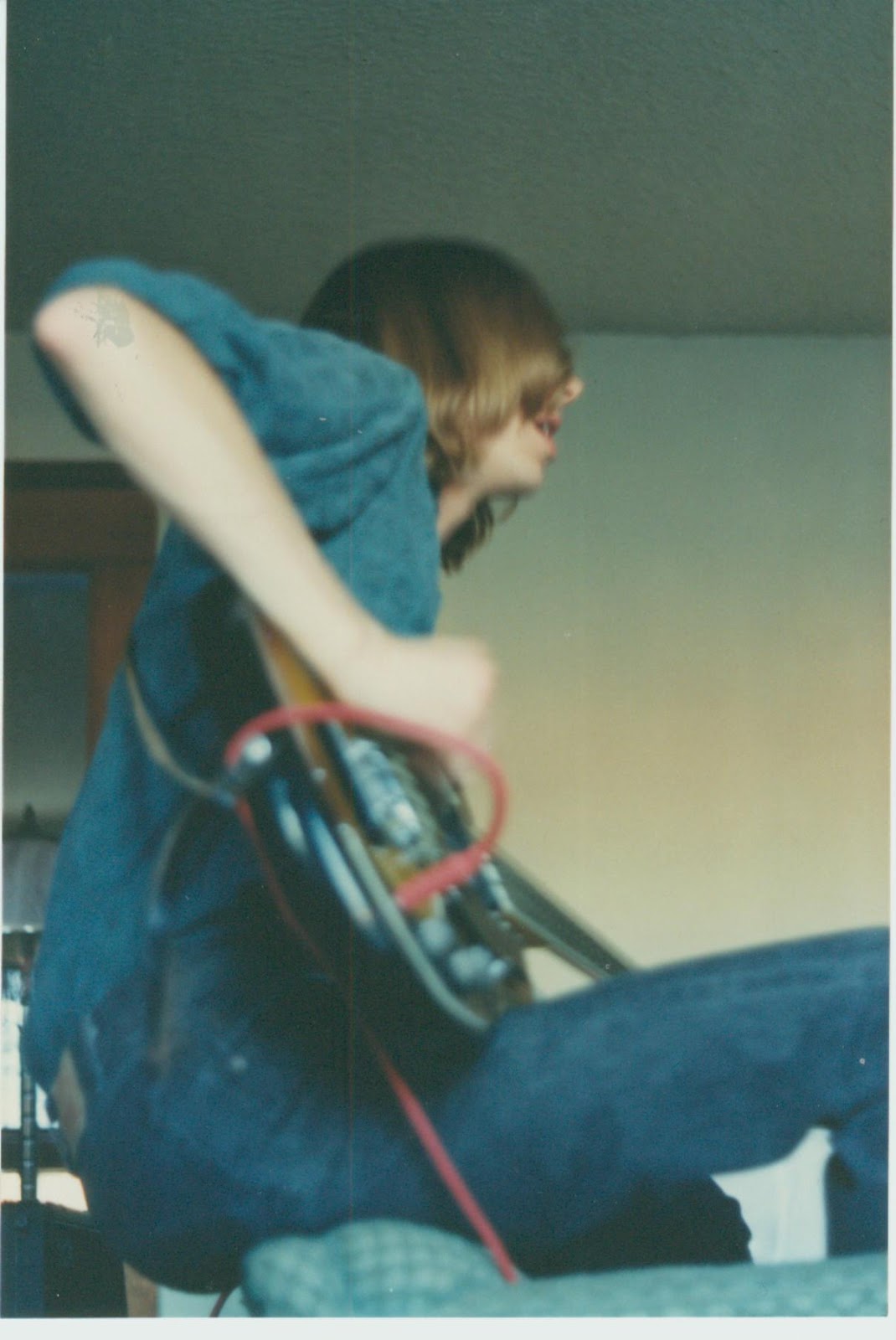
By the time The Loons first album was released on Get Hip Records in 1999 “Ugly Things” magazine had been around for twelve years. Could you describe for our readers the evolution of the publication to that point?
The first 11 issues were very primitive in the classic fanzine style. Printed or sometimes just photocopied on 8 ½” x 11” sheets and stapled down the side. It was all typed out on an old typewriter, then shrunk down on a Xerox machine and pasted into columns. All the photos had to be shot as halftones using a huge camera. Paying to have that done was one of my biggest expenses at the time, but it was money well spent, because even though the fanzine was very basic in its layout, the photos always reproduced well, and that became more and more important as we started using more rare or previously unpublished photos.
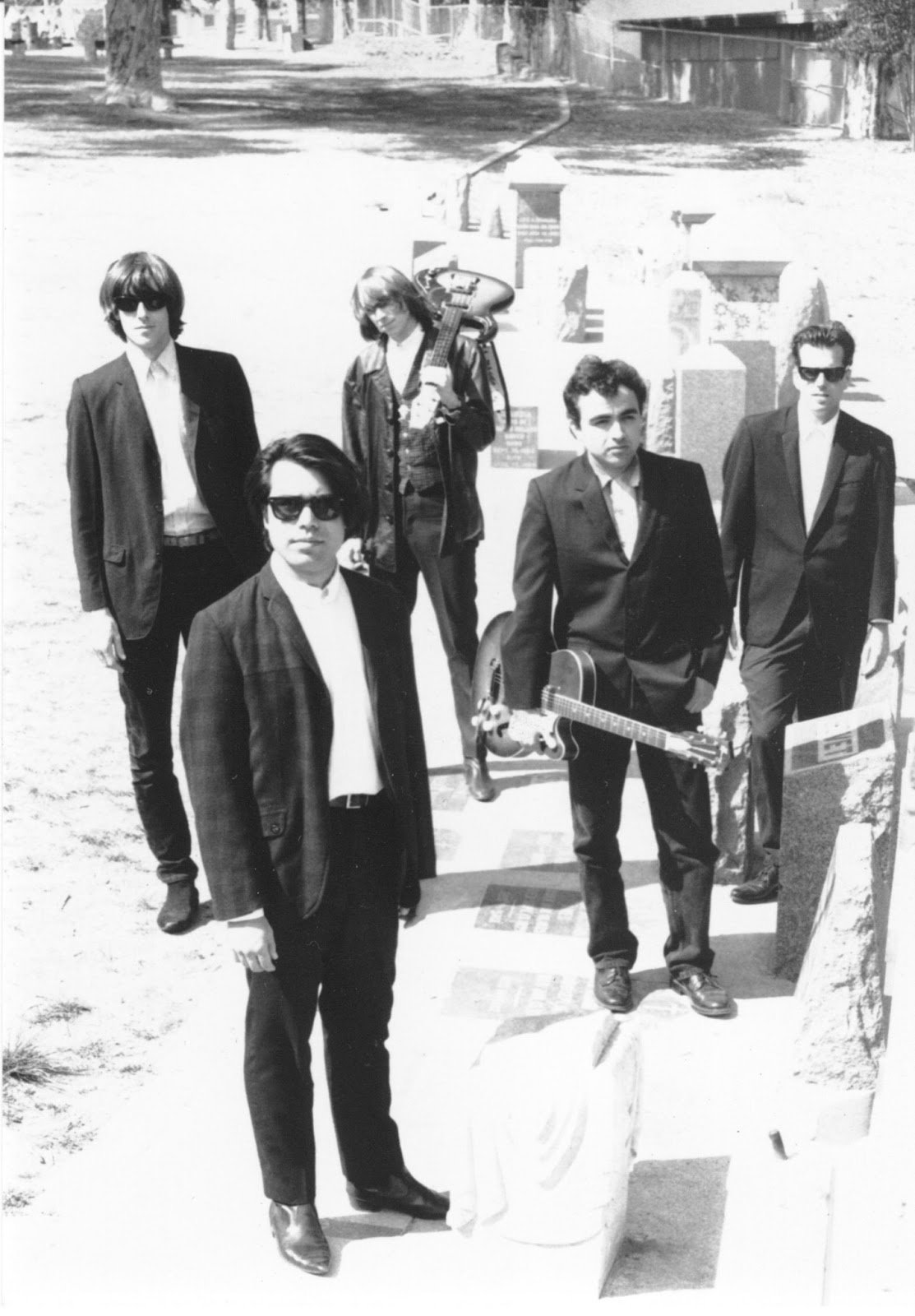
With Issue #12 Ugly Things entered the computer age. I started using a desktop publishing program to layout the text, but I still shot halftones and pasted them in by hand until Issue 23 or 24, because I found the quality was better that way. Anyway, Issues 12 through 15 were printed on 11” x 17” paper, then folded and saddle-stitched. The glossy covers began with #13. Starting with #16 I switched to the perfect bound format as the mag started to expand its page count. By Issue #20 we were printing 200 page issues. Circulation expanded with every issue. Issue #1 had an initial print-run of 200 copies. By Issue #16 we were printing 5,000.
The Loons debut album Love’s Dead Leaves consisted of only original material composed by guitarist Eric Bacher and yourself, in contrast to your previous bands who recorded many cover versions. Why the change? How did you and Bacher become a writing team and what was the writing process like?
The Hoods records had been 95% original songs, and with the Loons that became 100%. We’ve always played some cover songs in our live set, but on record I wanted to do something that was entirely our own. Collaborating with Eric came naturally. He’s a very creative person and would present me with lots of very inventive riffs and chord progressions. I would edit and shape his ideas, adding vocal melodies and writing lyrics, and then we’d then work on the final arrangement together with the rest of the band. On some occasions I would come up with a riff or chord sequence myself, and then Eric would embellish that, and we’d proceed from there. “Insecurity Smasher” and “Never Enough” were examples of that.
2002 brought the introduction of Ugly Things Records and its first release, The Lost Acetates 1965-1966 by The Misunderstood, who had released three classic singles in the 60s and a compilation Before The Dream Faded in 1997. Where and when were these acetates discovered and how were they chosen to be the first release on Ugly Things Records?
I was working on a huge, serialized story on the Misunderstood at the time. In the course of interviewing the band members, it was discovered that the drummer, Rick Moe, had a pile of acetates in his attic. They were never really “lost,” but everyone else had forgotten their existence. As soon as I heard them, I knew I wanted to release them myself through the magazine. That’s how UT Records began.
2004 brought the release of The Loons second album, “Paraphernalia.” What were the sessions for “Paraphernalia” like? How well did the album sell and did it get much radio airplay? Were there any singles that accompanied the album?
The sessions for Paraphernalia were fairly haphazard. We began recording the album with Jon Reis of Rocket from the Crypt producing at his studio, but things weren’t gelling with the band so we abandoned it and changed our lineup. After a few months rehearsing with a new drummer, Iain Sclater, we started all over again at Earthling Studio. Things moved along fairly quickly after that. We’d been sitting on some of the songs for several years and they felt a little stale, to be honest. But we wrote a few new ones during the sessions, and those turned out the best. For example, “Another Life” was written just a couple of days before it was recorded, and the final arrangement happened right on the spot. We had no idea it would be an 11-minute track – everything was cooking so we just let the tape roll until the end of the reel.
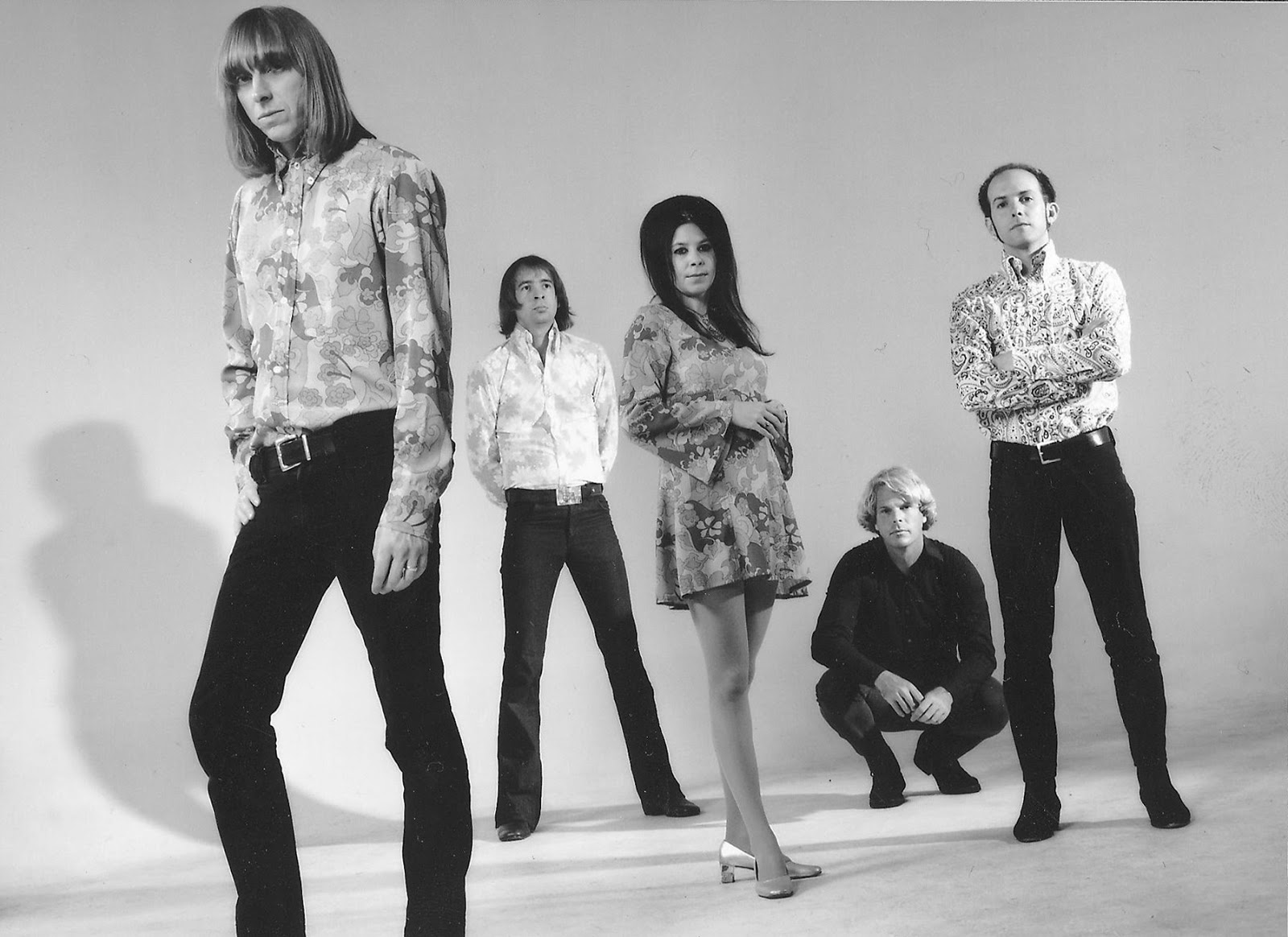
How many releases does the Ugly Things Records catalog contain at this point? How do you decide which albums earn the Ugly Things logo? What is the typical process and how long does it take to complete a project for UTR, from conception to release?
We’ve released eight full-length albums (three on vinyl and all of them on CD) and four vinyl singles. The process for each release is different—some take months to plan and release, others happen much more quickly. I don’t have a regular schedule of releases, they just happen when the opportunity comes along, invariably as a by-product of a story I’m researching for the mag.
I love the entire Ugly Things Records catalog, but are any of the releases especially near and dear to your heart and if so, why?
The Pretty Things/Philippe Debarge album. Releasing a lost album from the Pretty Things’ psychedelic era was a huge achievement for Ugly Things and something I’m very proud of.
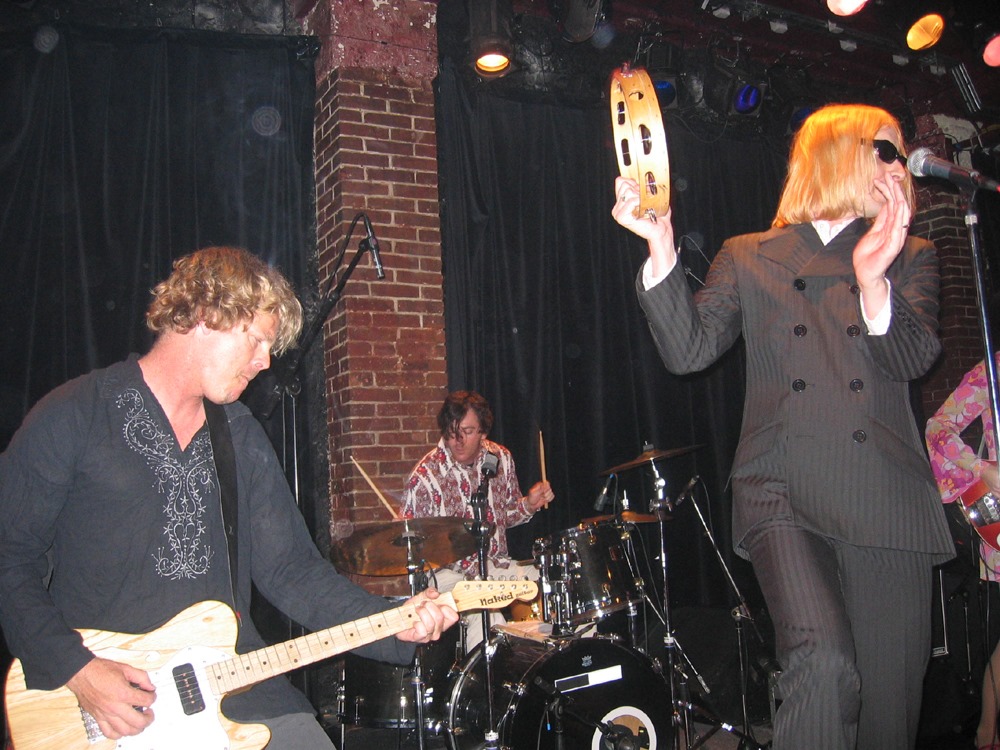
You have a store on the Ugly Things website. When did you open the store and how do you determine the inventory you carry?
You can check out the inventory here. I try to carry titles that aren’t otherwise widely available (especially in the States) and that are in the same niche we cover in the magazine. Vinyl does best for us, so that’s the main focus, but we also carry CDs, books, and of course all the Ugly Things releases and back issues.
The online store began about three years ago. Prior to that I sold a few things through the regular UT website and in the pages of the mag itself. I decided to expand that into a webstore, which was a good move for me. The webstore helps keep me solvent between the publication of new issues.
You coauthored a book “Like Misunderstood” with Rick Brown of The Misunderstood. This is called a biographical novel. What exactly is the book about and why did you and Brown coauthor it?
Rick and I worked for several years on a movie screenplay about the Misunderstood and Rick’s subsequent adventures as a fugitive in India. Rick came up with the idea of turning the screenplay into an autobiographical novel as another means of presenting the story.
In 2010 The Loons released their third album Red Dissolving Rays Of Light. Once again, all the songs are originals and the only personnel change was the drummer. What affect has this stability had on the band? How were sales of the album and were any singles released in conjunction with it?
Shortly after we completed Paraphernalia, Iain Sclater left the band, and we brought in Mike Kamoo on drums. Mike runs Earthling Studio and had produced Paraphernalia so he was already a good friend and very familiar with our work. His addition changed the entire dynamic of the band and I think raised us to a new level. As we now practice at Earthling, we’re able to work on new song ideas all the time, and if something feels right Mike will throw up a few mics and we’ll record it. Red Dissolving Rays of Light came together that way over the course of several years. I believe it’s our strongest set of songs by far, and Mike also did a tremendous job on the production.
As for sales, I believe it’s sold a thousand copies or so. We continue to languish in obscurity, as we always have, and there’s no shame in that.
Red Dissolving Rays Of Light was released on Bomp! Records, the late Greg Shaw’s label now run by his widow Suzy. Why was the album released on Bomp!? Was the label resurrected especially for this release?
Releasing the album on Bomp was Suzy’s idea. The label has continued to exist as an outlet for reissues, but the Loons album was the first new release on Bomp in about 20 years. Bomp has played a big part in my life over the years – starting with Greg forwarding my letter to the Crawdaddys in 1980 – so it felt like coming home in a way. Suzy and Patrick are great people, and they have treated us right.
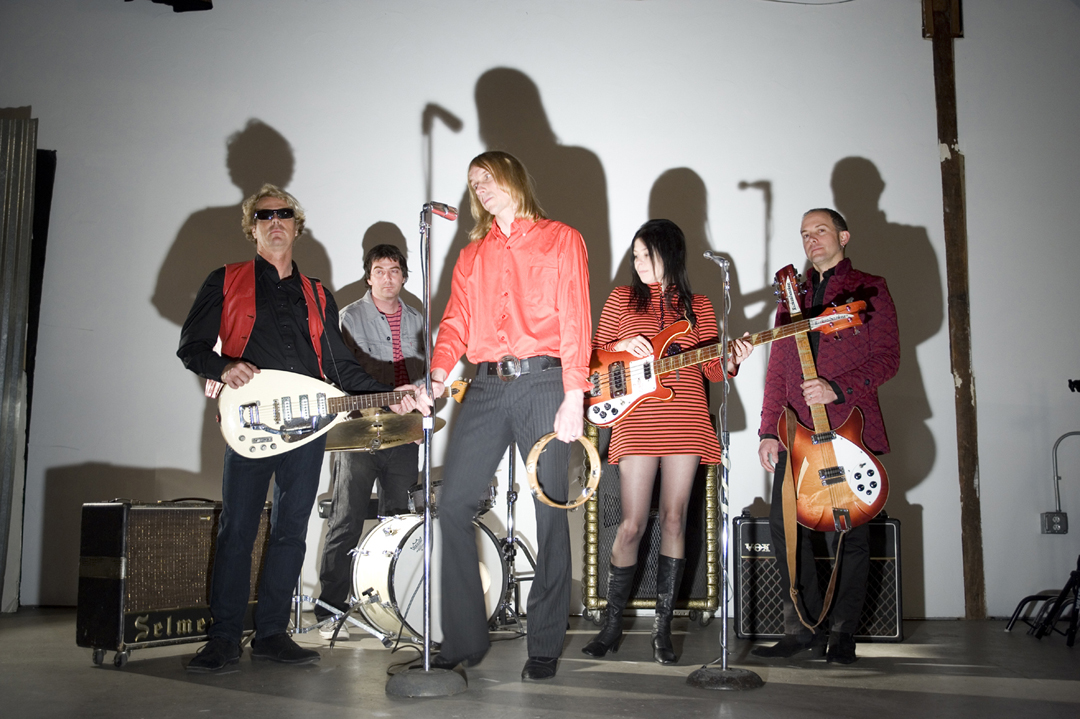
The last two albums have featured your wife Anja on bass. What is it like to play gigs and record with your wife as part of The Loons?
Anja has been a Loon for about 14 years now and she’s absolutely integral to what we do (as are all the band members). She brings a lot of energy and ideas to the table. Being able to make music together is a really special part of our lives.
Mike one thing we haven’t discussed are all the albums you have written liner notes for and/or compiled. How many would you estimate you have been involved with over the years? Do you remember the first you ever wrote and/or compiled?
I haven’t kept count, but I’m sure I must have written liner notes for over a hundred releases by now. I believe the first set of liner notes I wrote was for Terry Gibson’s Downliner album in 1986. Terry was of course the original lead guitarist for one of my favourite bands, the Downliners Sect.
Following that line of thought could you name a few which you consider the most important that you have been involved with? Which of these projects were the most enjoyable to be involved with?
The two Nuggets box sets were obviously important as they helped bring a lot of this music to new ears. I really enjoyed writing the liner notes for Norton’s vinyl reissues of the first two Pretty Things albums (and a third album of the non-LP singles), and also some of the titles I’ve worked on for Pseudonym in the Netherlands. The Group 1850 story, for example, is one of the wildest and most fascinating I’ve worked on. Writing about the Outsiders and Q65 never gets old either – such great bands.
You have been involved in several reissues on the Dutch Pseudonym label, such as the new 2 CD edition of the classic album Crystallization by Cosmic Dealer. How did you become involved with Pseudonym?
I became involved with Pseudonym a few years ago. I was knocked out by the quality of their releases – the music, the mastering, the packaging — but I felt they were missing one important thing: liner notes. So I offered to start doing that for them. I currently write the notes for about two-thirds of their releases. It’s been a great experience so far, interviewing all these different Dutch musicians and producers. I usually have two or three different Pseudonym projects on the go at any given time these days. I only write notes for music I’m enthusiastic about.
2013 will mark the 30th anniversary of Ugly Things Magazine. Congratulations on the accomplishment. To what do you credit the longevity of Ugly Things?
Probably a greatly protracted, undiagnosed case of obsessive compulsive behavior. It all comes down to the fact that I love what I’m doing in. I’m excited to wake up every morning and go to work, because I’m working on the magazine.
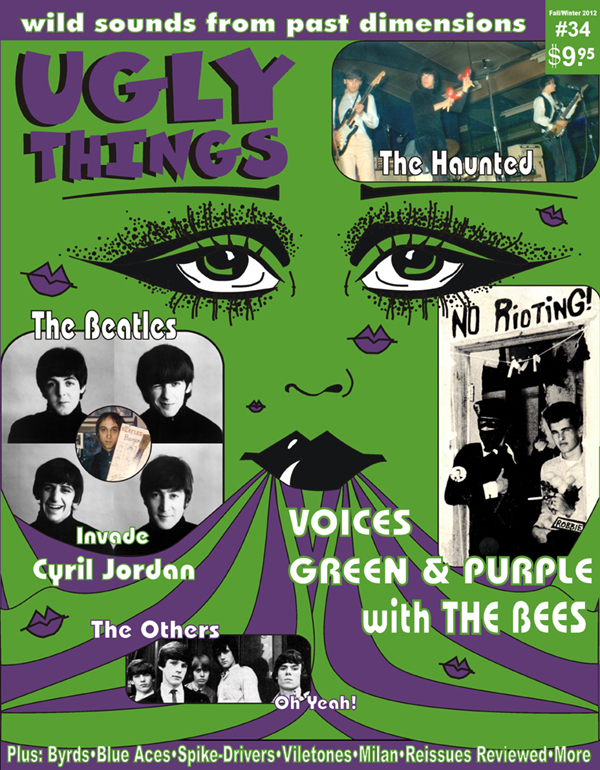
Thirty years on, how does circulation of Ugly Things magazine in 2013 compare to 1983? How many writers contribute to the publication? How large is the staff at Ugly Things magazine?
The circulation has grown from a few hundred to over 5,000. As I mentioned earlier, there really are no “staff” in the strict sense of the word. The magazine is put together by a small circle of friends and fellow writers around the world who share my passion for this music and the need to share that passion with other fans. David Biasotti edits the music reviews, Andrew Corbin edits the book review section, Bill Wasserzieher handles the DVD reviews, and Jeremy Cargill helps out on a lot of other fronts, including the proofing and sub-editing of the stories. I handle everything else, including all the administration work, ad sales, shipping, marketing, and so on. It’s a full-time job that keeps me busy 40-50 hours a week at least.

Looking back on the thirty year history of Ugly Things magazine there must be some pieces that you consider the most important and some that you are especially proud of. Would you share a few with our readers?
One of the pieces I’m most proud of is the Misunderstood story, which was serialized over four issues starting with UT#20. I can’t begin to guess how many hours I spent researching that story, interviewing all the band members, and anyone I could find who was even remotely connected with the band. The Misunderstood seemed to consume all my waking moments for several years. But it didn’t feel like work. It was a life experience: I learned so much from it on so many different levels, not just about the band and their music, but about the entire era and how it shaped different individuals in very different, often extraordinary ways. I also formed friendships with some of them that I know will last for the rest of my life. Working together with Rick Brown on our movie screenplay and having Glenn Campbell play on two songs on our last album, and then later performing live with us, were just a few of the unforgettable side effects of doing that story.
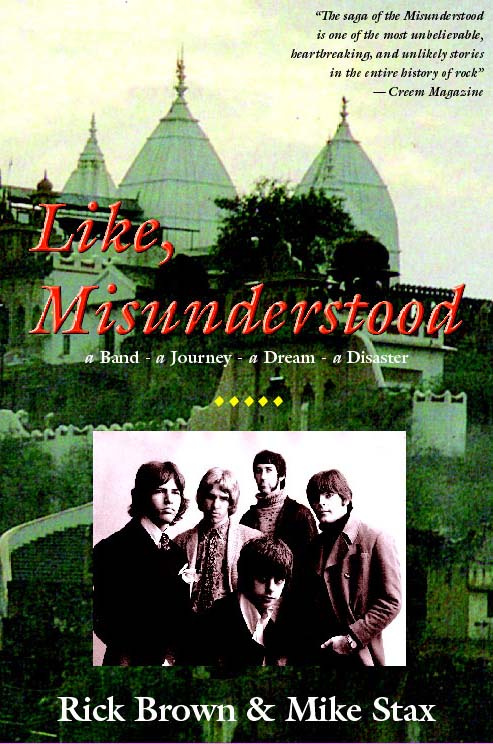
Book by Mike Stax and Richard Shaw Brown
There are several other stories over the years that have affected me in similar ways. Not least of those, of course, has been my ongoing relationship with the Pretty Things. I started out as just another naïve fan fawning over them, and now I’m part of their extended family. In 2013, the year I celebrate Ugly Things’ 30th anniversary, the Pretty Things celebrate their own 50th anniversary as a band. There’s a special kind of symmetry or synchronicity in that, I think.
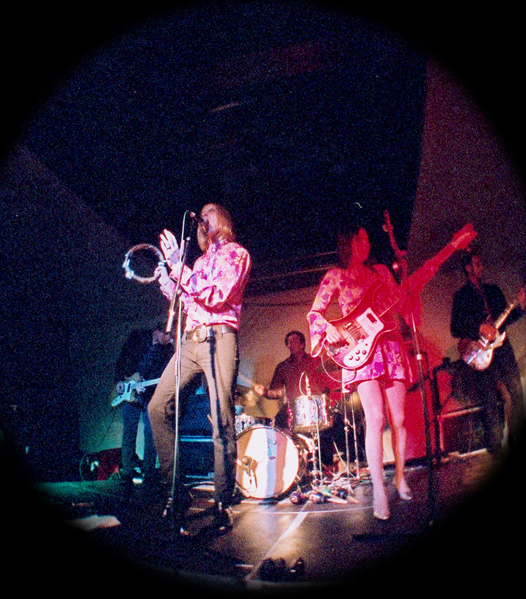
As for your thirty years as a musician, what are your most memorable moments? What do you consider your best compositions? What recording sessions are the most memorable? Would you share a couple “on the road” stories of touring over the years.
That’s a lot of ground to cover. So many memorable moments. Singing “Rosalyn” together with Phil May onstage with the Pretty Things a few years ago was certainly one of them. Also the show we played with Glenn Campbell guesting was unforgettable. When he played his solo during “I Can Take You to the Sun” I felt I was levitating several feet off the floor of the stage. I can’t begin to describe how amazing that felt.
Perhaps the most memorable recording sessions were those for the first Loons album with Ebbot Lundberg as our producer. He really brought out the best in us and our material, and turned it into something special.
I’ll leave it up to the listener to decide what our best compositions are. For me it’s always the next song we’re working on.
What does the year 2013 hold in store for Mike Stax? A new album by The Loons? Are there any special recordings slated for release by Ugly Things Records? I know this question isn’t fair, but I have to ask it anyway: Are there plans for any special topics set to be published in Ugly Things magazine in the future that you can share with us? Just had to ask. LOL
Well, 2013 is a landmark year for me because it’s the 30th anniversary of Ugly Things magazine. We have a big three-day celebration in the works for Memorial Day Weekend at the Casbah here in San Diego. There’ll be some great bands playing (including, hopefully, a couple of big names near and dear to the world of Ugly Things – these yet to be confirmed at the time of writing), and we’re also having film screenings, book signings and other fun stuff. Mark your calendars and watch the Ugly Things website and Facebook page for updates.
Hopefully the Loons will finish another album this year. We have six or seven songs already recorded and several more in the works. I’m very excited with the results so far. We’re pushing and pulling in a number of new directions, challenging ourselves to top anything we’ve done before.
The next Ugly Things is due in the spring, and it’ll include my feature on Craig Smith (a.k.a. Maitreya Kali) of the Penny Arkade, a story I’ve been working on for over ten years, and one of the strangest to ever appear in our pages. The issue will also include stories on the Moving Sidewalks, the Nazz, Sands (“Listen to the Sky”), the Focal Point, and Ann Arbor, Michigan’s legendary ‘60s era teen club the Fifth Dimension. Should be a good one.
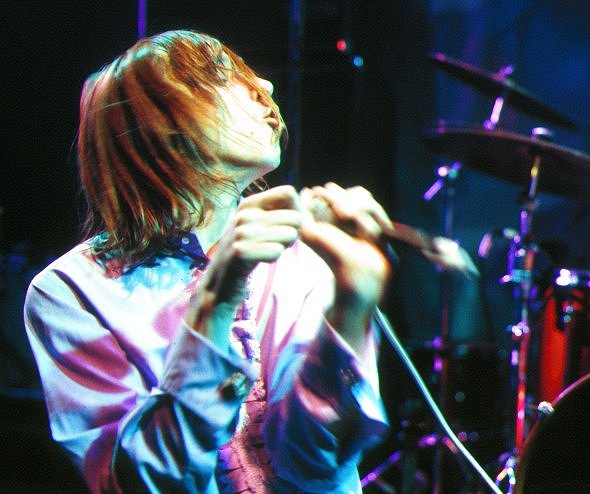
Mike, I want to thank you so much for taking the time to give our readers a glimpse inside the evolution of Ugly Things, the magazine and the record label and Mike Stax, the musician and journalist. May 2013 be a special year for you and yours and continued success in all your endeavors.
Thanks for giving me the opportunity to tell me story to your readers.
– Kevin Rathert




Great interview!
Fantastic insight on a great guy.
Glad that people seem to be pleased with the interview. I gave it all I had, so thank you so much for the kind words.
Excellent piece on the publisher of the best rock 'n roll magazine ever and front man for the Loons, one of my all time favorite bands. Bravo!